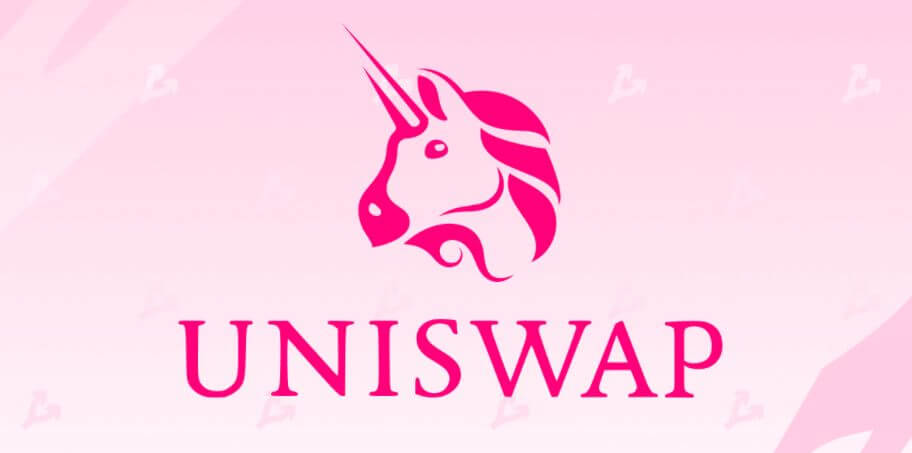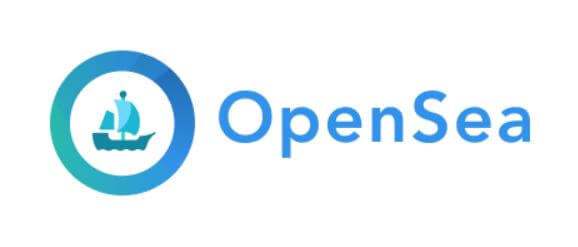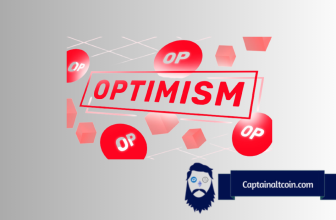
The crypto community always has its latest fads and trends. We had home-mining, ICOs, staking, and pooling, and now all we hear about is DeFi. The big difference is that DeFi is here to stay.
It’s the natural progression from the redundant centralized, top-down systems to a decentralized world where your personal sovereignty and wealth are in your own hands.
What you'll learn 👉
What Is DeFi?
DeFi stands for Decentralized Finance. All the services we use on a daily basis are centralized. They are managed and policed by organizations or businesses. Our banks oversee our financial transactions, social media companies monitor and control our speech, and telecommunications companies sanction and spy on our cell phone use. We are all at the mercy of unelected, super-rich, unaccountable, trans-national corporations.
All these institutions are either profit-based or lobbyist funded and have the right to refuse their services at any time. They also appropriate our data and sell it to the highest bidder without our knowledge or specific consent. We are vulnerable to capricious lawmakers and greedy corporations in a centralized world. We have no say about fundamental changes to our lives.
Decentralized services have no such middleman required to sanction and facilitate transactions or services. You don’t need consent, approval, or permission from banks, governments, political organizations, or anyone. There’s no longer a requirement to trust the people we don’t trust.
Stage one was digitizing the centralized world. Stage two is decentralizing the digital world.
Types of DeFi projects
For every service we use in our lives, there will be a DeFi version popping up sooner or later. The killer apps of the internet were not thought of in the early days until bright young people started using their imaginations. It will be the same with DeFi. Most of the possibilities have not yet been imagined.
As it stands, there are distinct genres of DeFi projects –
- DEX – Decentralized Exchanges
- Decentralized Coins and Tokens – EG. Bitcoin
- Decentralized Private Wallets
- NFTs – Non Fungible Tokens
- Lending and Staking
- Payment Systems
- Asset Management
- Project Governance and Infrastructure
- Data Analytics
- Social Media
- Music, Movies and the arts
Below we take a brief look at some of the names making the DeFi headlines at the moment. For a deeper dive, click the links and see for yourself.
Best 10 DeFi Projects
Below is the list of what we consider to be the best DeFi crypto coin worth looking into this year.
Uniswap
Uniswap provides a DEX (Decentralized Exchange) to trade your crypto coins, but under the hood, there’s some real innovation. Traditional centralized exchanges use an order book – a list of buy and sell orders representing the trades that people would like to make. This order book needs to be managed by a central administration team of crypto market-makers.

These teams have a habit of removing your ability to trade an asset without notice whenever it suits them or their investors. Think Robinhood and Gamestop. So, how do we decentralize an exchange and free ourselves from this tyranny?
Uniswap employs an AMM algorithm (Automated Market Maker) to do a similar job. It’s automated so it obviates the need for human admin. To make this fundamental shift viable, it requires the exchange to keep a substantial ‘liquidity pool’ of each currency pair.
So, you are now trading against this huge liquidity pool of cryptocurrencies, but where do they get all this crypto? You, me, and anyone else can invest in a liquidity pool and get paid a portion of the trading fees. With an individual on one side of the trade against the liquidity pool on the other, there are no middlemen siphoning off a profit, or interfering with your trades.
Asset prices can be affected by large trading volumes as the algorithm adjusts the prices of a trading pair to maintain a fixed value within the pool. The larger the liquidity pool, the less ‘slippage’ there is, but unless you are swapping very large amounts, this should never affect you.
This is typical of DeFi projects. In a traditional exchange, you have a company profiting from commissions from both ends of the trade and paying off their private investors who have a direct influence over their policy decisions. With a Uniswap-style DEX using AMM, everyone can be in on the game – and play for both teams at the same time. It has democratized the concept of exchange.
Maker
Maker is a decentralized platform for borrowing. It’s based on the Ethereum network and uses the Dai stablecoin, which is fixed at 1US$. To get started, you open a ‘vault’ into which you deposit your crypto. You can then borrow DAI and pay it back whenever you want. There’s a ‘stability fee’ of a few percent per year which is added to your Dai debt. Any gains on your original crypto asset will be yours when you pay back the Dai debt and unlock your coins.
Be careful here, as this works both ways. You can borrow more Dai than you deposit in your vault. This is the leverage that risks your locked-up crypto falling in value and not being able to cover your Dai debt. If this happens, your vault is liquidated, and you can lose everything in it.
Maker also offers a no-fee, decentralized, Peer-to-Peer token exchange to anyone with an Ethereum wallet. You can fix your buy and sell prices in the usual way with limited orders and set an upper limit on the slippage. It’s non-custodial, meaning that you never give up your private keys when trading.
Yearn.finance
Yield farming has become a popular term recently. Many of the projects listed here offer the opportunity to lock up your crypto in a pool and be paid a yield. But which are the most profitable platforms for investing your crypto? That’s where Yearn.finance comes in.
Yearn will find and invest in the highest-yielding DeFi borrowing and lending sites on behalf of the user. Returns have been incredible in the early days, but this is still a nascent project. A visit to the Yearn.finance website shows that there are dead links and a warning stating, “This project is in beta. Use at your own risk.” I think I’ll wait and see how things develop over the next year before I jump in.

Aave
Aave is billed as a decentralized, non-custodial, open-source liquidity-providing protocol. So far, so good – it ticks all the DeFi boxes. You can either lend to the pool to collect interest or borrow against your crypto asset and pay interest. At first sight, it’s what an old-fashioned retail bank used to do. They charged a little more for loans than they paid for customer deposits.
Aave charges a tiny loan initiation fee before your assets are allocated in a smart contract on the Ethereum network. From this point, interest becomes due on your loan balance until you pay it back. Again, it’s all super-transparent and open-source. You can even tokenize your lender positions and trade them as assets on the Ethereum network. This is a great example of smart contracts in action.
There is a risk, however. If the value of your digital assets falls below a certain point, your position is in jeopardy. You must either pay back some of the outstanding loans or add more assets to your position. Aave calculates your account’s ‘Health Factor’, a kind of financial well-being score. Should this fall below one, a liquidation is triggered, so make sure you read the small print thoroughly.
SushiSwap
Forked from Uniswap, SushiSwap is another decentralized exchange (DEX) where you can swap coins, join a liquidity pool, or stake your assets. There does not seem much to distinguish it from other DEXs. The literature suggests that Sushi will be more decentralized and more governance-focused than Uniswap. I could find no documentation to support this.
Whatever, it’s open-source and decentralized, and the fees look really low. Who knows? Will SushiSwap turn out to be pets.com or amazon.com? They have a cool name, and at the moment, they are flying high.
Kava
The important feature of Kava is its cross-chain functionality. It’s based on the Cosmos network, which we will be hearing a lot about in the years to come. Cross-chain platforms enable integration with all tokens. For example, Ethereum-based lending and borrowing Decentralized Finance applications can only deal in ERC-20 tokens. In principle, Kava’s cross-chain approach can collateralize and lend against any cryptocurrency on any network.
The platform uses the USDX stablecoin backed by crypto assets and its proprietary token, KAVA, for governance and voting rights. An interesting feature is its ‘Switch’ function. Again, you can swap tokens from different blockchains from within your crypto wallet without exposing your private keys.
If decentralized finance is to become truly frictionless, this inter-chain communication will be key.
Curve
Yet another yield optimizer with a catch: it specializes in stablecoins and is running on the Ethereum network, Curve runs a liquidity pool to support its exchange. All the trading fees are fed to the liquidity providers, and it has some great exchange rates. If stablecoins are your thing, then take a look at Curve. It currently supports USDC, DAI, TUSD, USDT, BUSD, PAX, and renBTC.
Bancor
Bancor provides liquidity with its Ethereum-based protocol. At first glance, it’s yet another DeFi exchange using pooled liquidity rather than an order book. The difference with Bancor is its cross-chain functionality. It’s currently developing a link to the Polkadot network, for example.
The value, strength, and security of a distributed network are all dependent on its size. Each time Bancor adds a bridge to another network, all these elements are strengthened. It’s still early days, but of all the projects discussed here, Bancor is looking like one of the eventual success stories.

Orion Protocol
Orion’s goal is to connect all crypto exchanges and all cryptocurrencies into one seamless experience. The aim is that you can buy and sell any asset on a decentralized platform without ever giving up your private keys. Gone are the days when you needed to convert your crypto into a stable coin and transfer it between exchanges to access the tokens you wanted.
They have a nifty trading platform and all the other standard features – borrowing, swaps, investing, wallets, etc. Overall, Orion looks good, but will we still be talking about it in 5 years? I hope so.
OpenSea
Remember CryptoKitties? They clogged up the Ethereum network in 2017 and had the financial press laughing at the blockchain community. In many ways, this hindered blockchain’s acceptance in the real world, but actually, it was an important event in the realization of the decentralized digital dream.
It was CryptoKitties that inspired Opensea founders Devin Finzer and Alex Atallah to explore the idea of layer 2 applications built on the assets of the underlying network. This led them to develop Opensea, a decentralized platform for trading NFTs (Non-Fungible Tokens).

The project grew, becoming popular on Discord with the gaming community. It now facilitates the sale of NFTs for art, music, games, ticket sales, etc. It’s a fascinating story and you can read an interview with Devin Finzer here.
Top 5 Low Cap DeFi Projects To Buy
Radix
Radix’s approach to DeFi is based on the assumption that the layer1 network protocols were never designed to cope with all the upcoming DeFi services. They have developed their own layer1 protocol tailor-made to house these decentralized applications.
Finxflo
Another platform that aggregates other platforms, Finxflo, will enable users to trade any cryptocurrency on any network. The same approach is applied to investing and borrowing. There are no national borders with Finxflo.
SyncBond
Assets locked up in a liquidity pool are packaged by SyncBond as a CryptoBond and made tradable as NFTs. You can trade them on NFT markets like Rarible and Opensea or hold onto your bonds and receive a yield in SYNC tokens (synthetic assets) on top of your Uniswap liquidity pool fees.
UniFarmer
Another yield-farming application, Unifarmer, allows you to stake only once but access a wide range of liquidity pools. You can unstake at any time, and of course, the whole setup is decentralized. You maintain ownership of your crypto throughout, and the whole process is open-booked for ultimate transparency.
Venus Protocol
Building on the Binance Chain, Venus Protocol promotes its VAI native token to power decentralized trading, investing, and borrowing platform. Thye claims no slippage and no trading fees.
Final Thoughts – Top DeFi coins
Quiz questions
- Q1 – What’s the largest and most valuable decentralized network in the world?
- Q2 – How old are decentralized networks?
- A1 – It’s Bitcoin, the original, trillion-dollar cryptocurrency.
- A2 – As old as blockchain itself.
Just because a blockchain network is distributed, it doesn’t make it decentralized. Binance, Ripple, and Coinbase are all centralized networks, even though they are important parts of the crypto ecosystem.
The new wave of DeFi applications builds on existing layer1 networks to leverage their private side-chains. They are a way of managing an application’s finances, funding, governance, and operations. All controlled by immutable smart contracts, there is no opportunity for corruption and no counterparty risk.
That’s the key feature of DeFi. We are never required to trust people we can’t trust.






